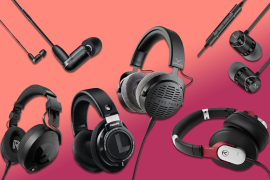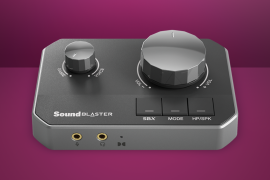Nothing Ear review: definitive article
Third time lucky for Nothing's ace affordable in-ears
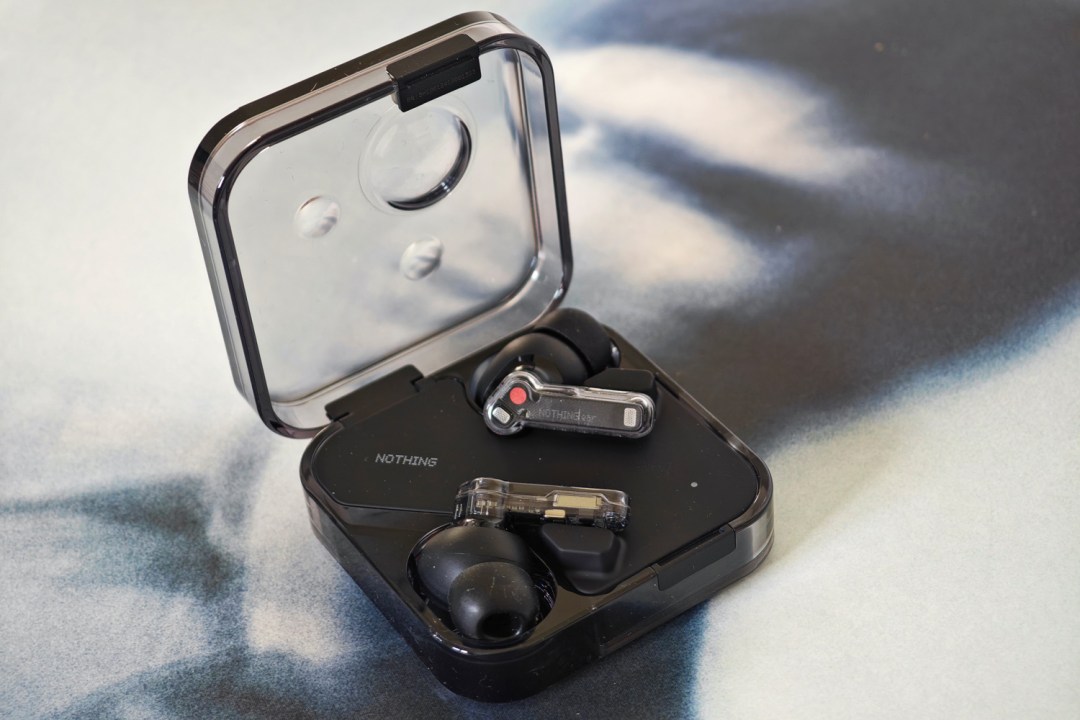
Stuff Verdict
As distinctive as ever, but now with ANC upgrades and EQ improvements. A modest yet welcome update on what were already capable and keenly priced wireless earbuds.
Pros
- Noise cancelling takes a small step up
- Battery boost much appreciated
- Enjoyable tuning with plenty of personalisation via app
Cons
- Not the biggest upgrade from the outgoing pair
- Cheaper Ear (a) not far behind on any front
Introduction
Before you ask: no, Carl Pei isn’t sat in a factory somewhere scratching the (2) off thousands of pairs of wireless earbuds. The Nothing Ear is an all-new model from the transparent tech specialist, one that foregoes numbers and says “this is as good as it gets around here”.
Underneath the now-familiar styling lies a new dynamic driver, uprated noise cancelling algorithms and much better battery life than the outgoing Nothing Ear 2 could manage. Clearer voice calls and extra hi-res Bluetooth codecs also make the cut. That’s quite the package, given the keen $149/£129 asking price – only it’s no longer the obvious choice for budget-minded music lovers.
Nothing has also just pulled back the curtain on the even more affordable Ear (a). It comes up short on features, but matches its bigger brother on ANC ability, and will only set you back $99/£99. Does the updated original still have what it takes to impress?
How we test headphones
Every pair of earphones and headphones reviewed on Stuff is used for a minimum of a week’s worth of daily listening. We use a playlist of test tracks made up of multiple genres to assess sound, and use our years of experience to compare to other models. Manufacturers have no visibility on reviews before they appear online, and we never accept payment to feature products.
Find out more about how we test and rate products.
Design & build: keep it in the family
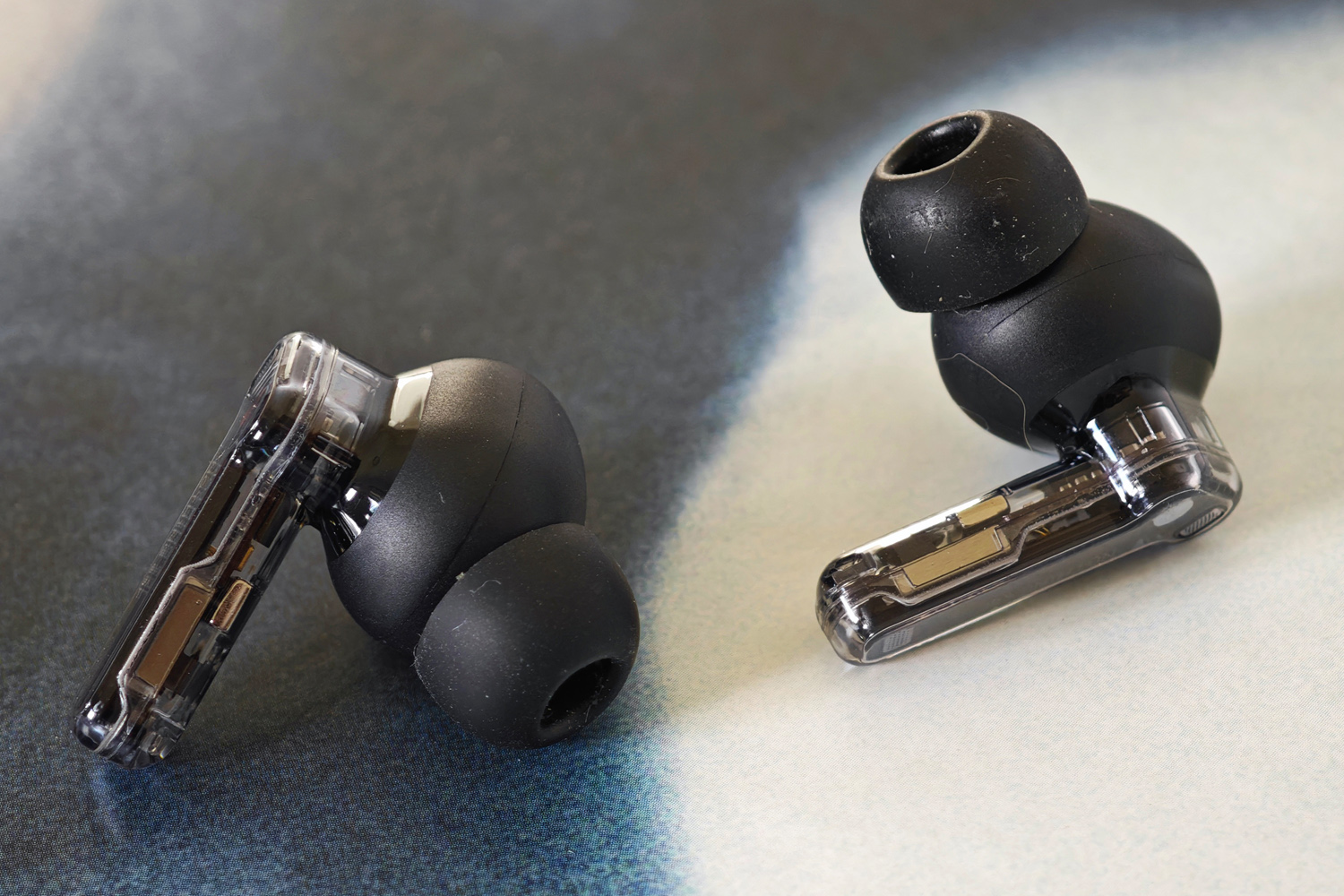
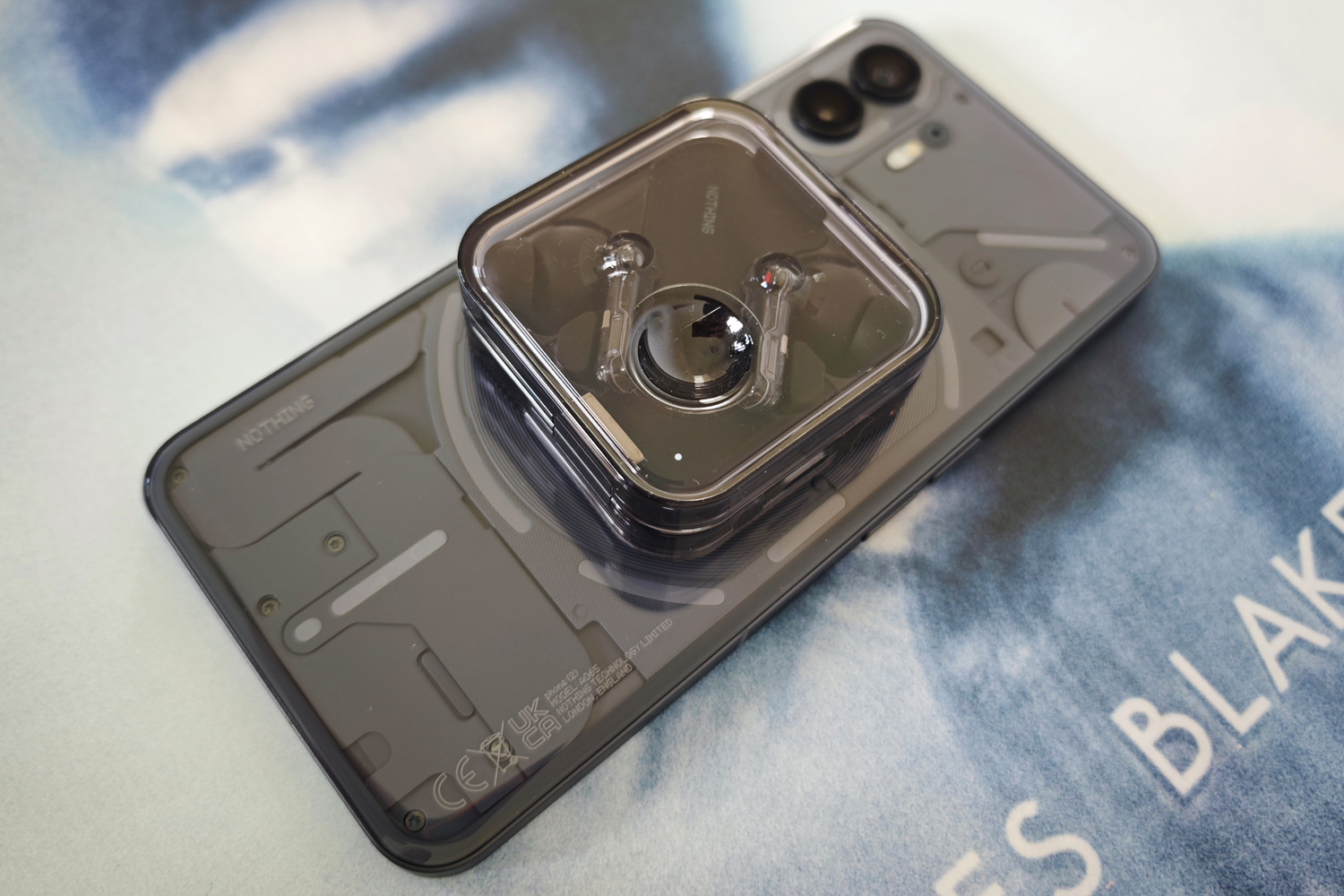
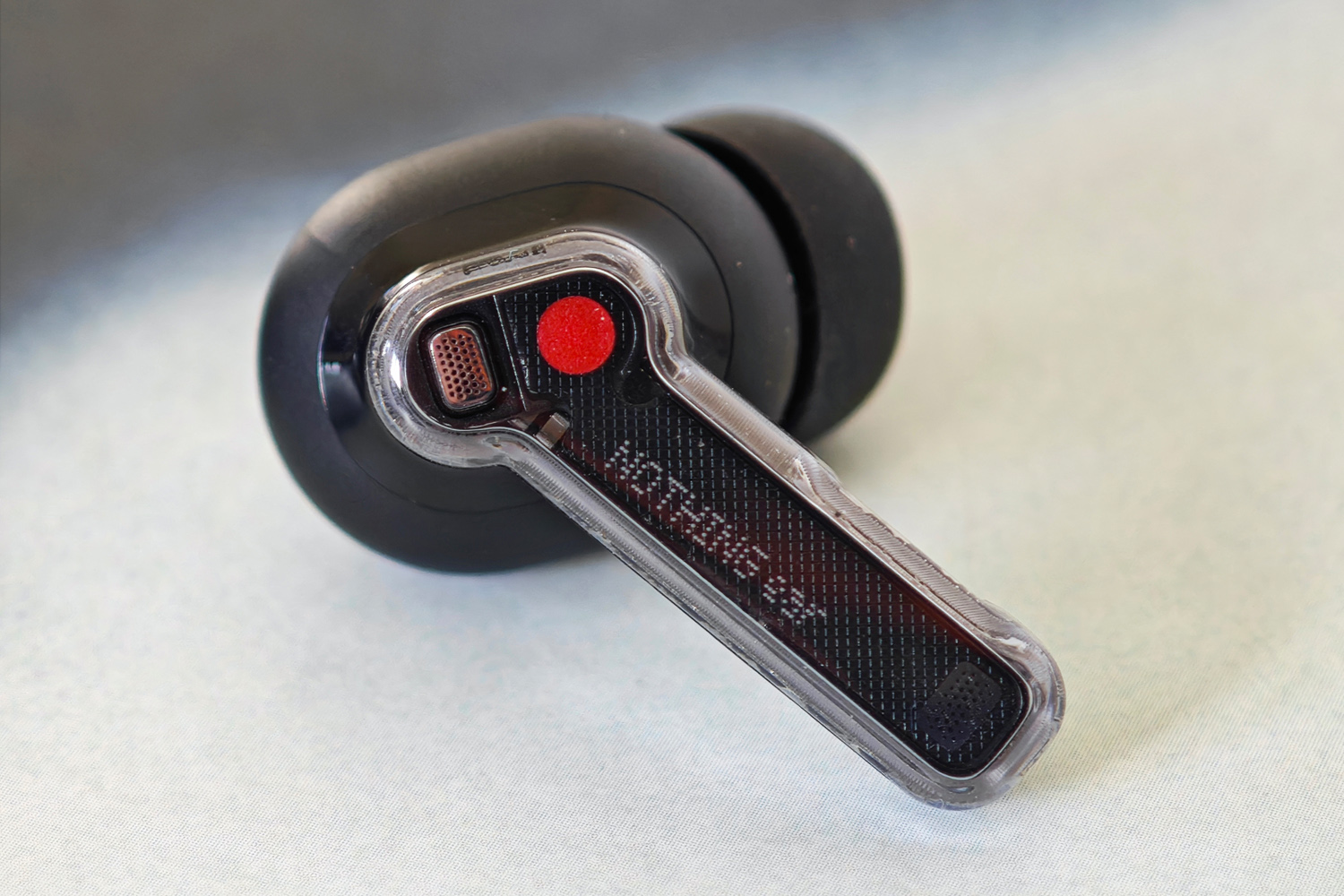
It’ll take a keen eye to notice you’re listening to the Nothing Ear and not the outgoing Ear 2, or even Ear 1; Nothing has stuck to its guns on the styling front, with see-through stem earbuds that live in a clamshell case. They’re available in black or white – for a splash of colour you’ll have to pick up the Ear (a) in its distinctive yellow hue.
The case keeps the flat top and bottom introduced with Ear 2. It’s made from the same mix of opaque and transparent plastics, which are more scratch resistant than the stuff used for Ear 1; that case scuffed far too easily, but this one has held up well throughout my testing. The size is perfectly pocket-friendly, but I thought the more rectangular Ear (a) case was better – even if its plastics don’t feel quite as nice to the touch.
Nothing has made the case IP55 water resistant, which is one better than the buds’ IP54 rating. Both can now happily shrug off a brief rain shower, which will be reassuring for outdoor fitness fans. Magnets keep the lid locked down and more hold the buds in place against their charging pins. I never came to listen to them and found out they’d not been able to refuel.
I couldn’t spot any major changes to the buds’ internal components, with the pinch control and in-ear detection sensors being in pretty much the same place as they were on Ear 2. The bits that hold the drivers look similarly bulbous, and sit just as comfortably in my ears. Weight is about the same, too. If you get on well with the Apple AirPods Pro or any other stem-style earbud, you’ll be right at home here.
There’s the usual bunch of different sized silicone ear tips included in the box. Once you get a good fit they give a decent amount of passive noise isolation, and help keep the buds in place while moving about. I could feel a bit of movement when jogging, but not enough that they fell out.
Features & battery: longer lasting
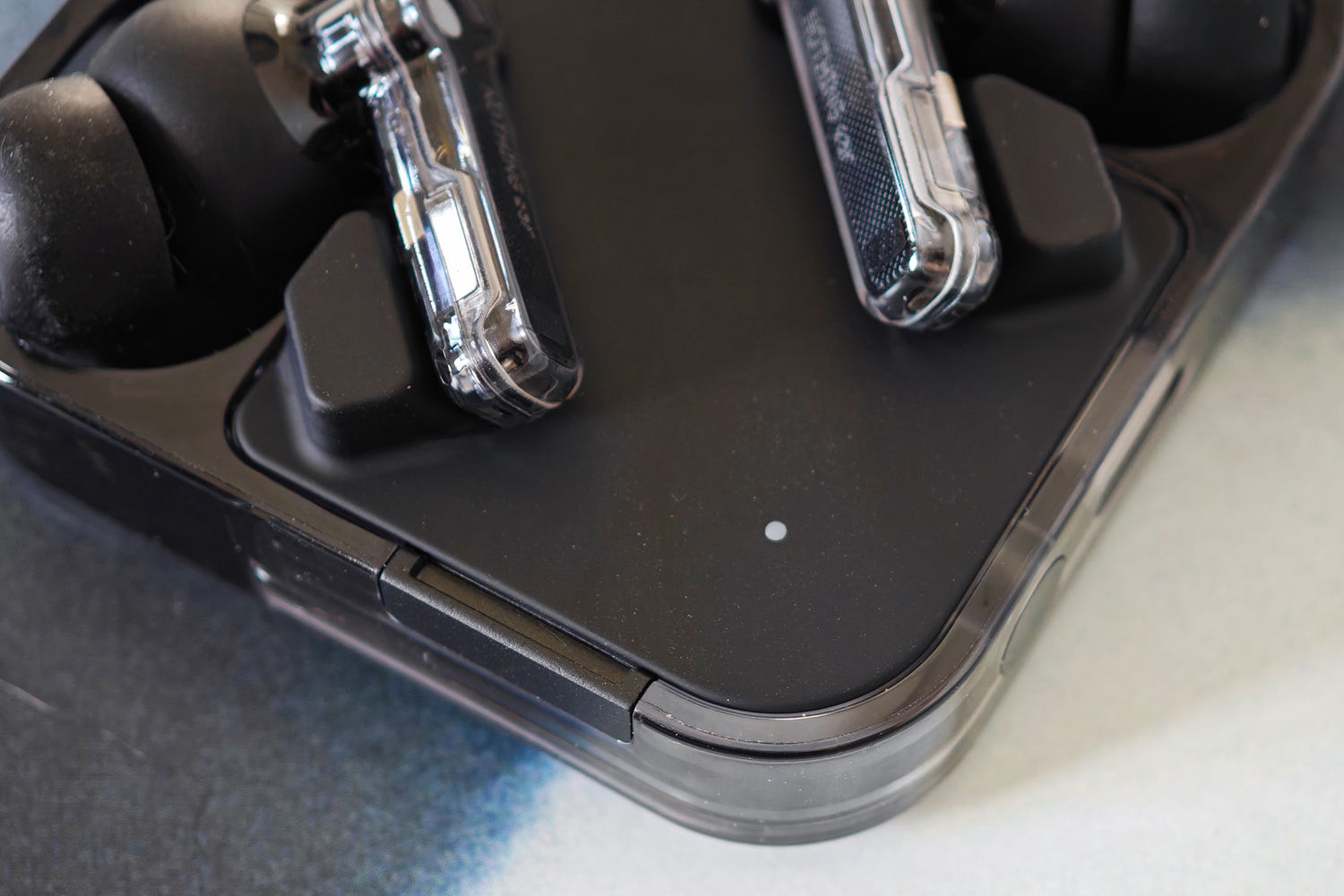
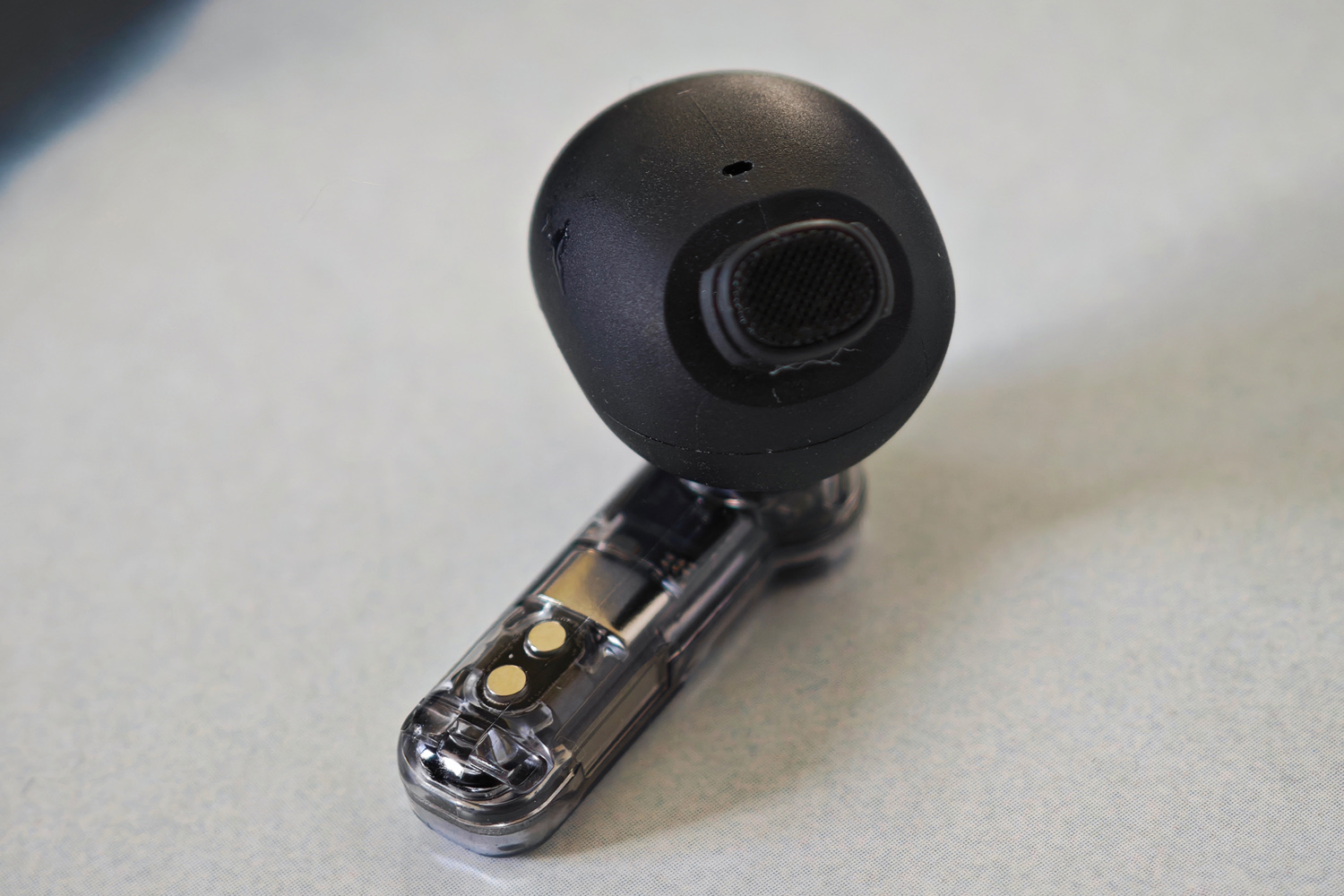
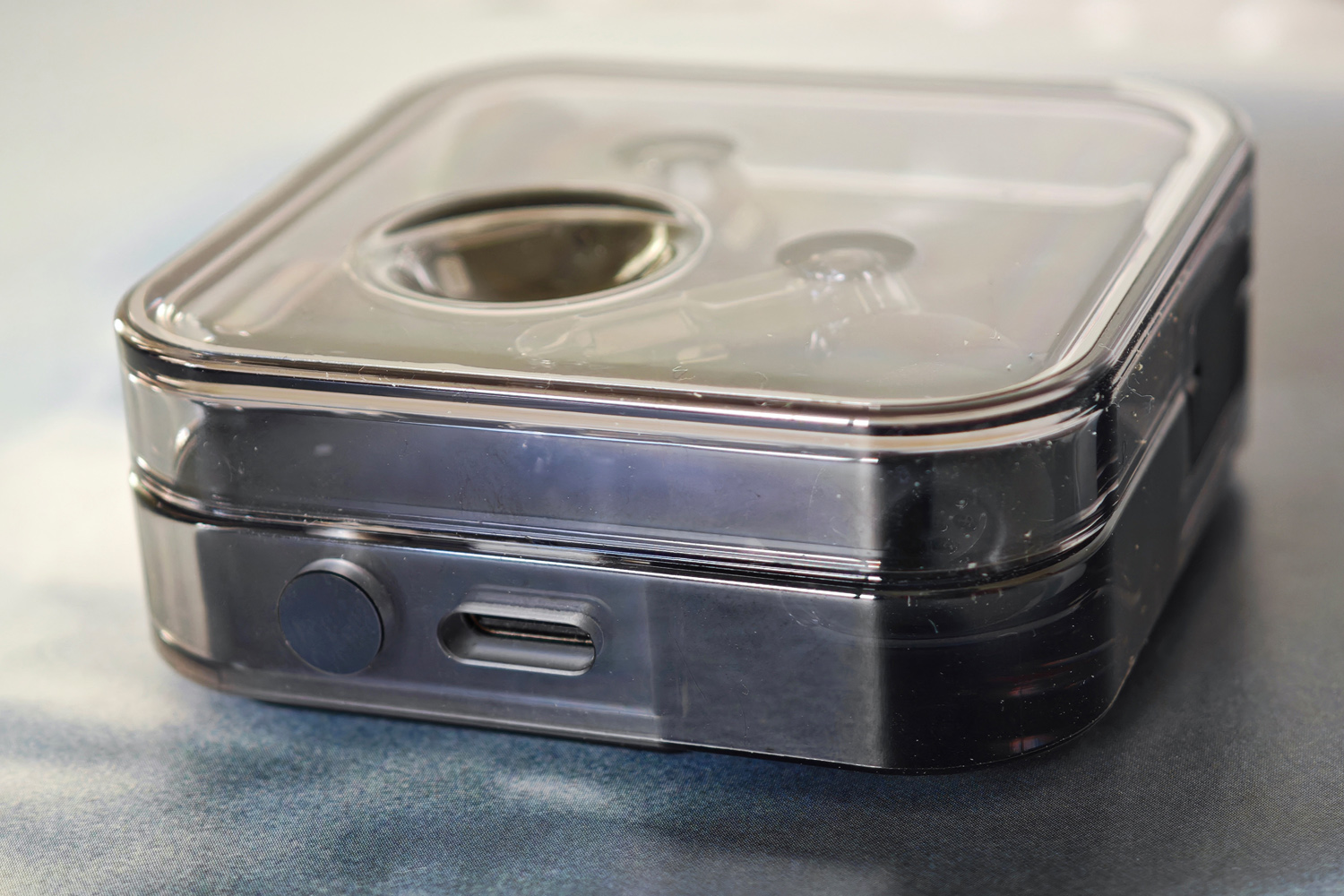
Most of the Ear’s feature list has been carried over wholesale from Ear 2, including multipoint connectivity and a low lag mode that works very well for gaming or video streaming on a smartphone.
Nothing has stepped up its high quality Bluetooth support for 2024, adding LDAC alongside LHDC; Ear 2 only had the latter, which isn’t as well supported as LDAC. Both deliver higher bitrate streaming than SBC or AAC, which Apple users have to make do with.
The pinch controls are just as easy to use as they were on the outgoing model. I never accidentally paused my tunes or skipped a track while adjusting a bud’s position in my ear. I do think in-ear detection has taken a step back from Ear 2, though. Tracks were constantly pausing, despite the buds being firmly in my ears. I eventually disabled the function. Maybe my ears are a funny shape, maybe I’ve got a defective unit – or maybe this is something Nothing can fix with a firmware update.
For me, the biggest improvement is to battery life. Officially the Nothing Ear can manage eight hours with active noise cancellation switched off – that’s a two hour boost over Ear 2. Turning on ANC, I still managed just over five hours of listening, which is at least an hour more than the previous generation could do. The charging case can increase those figures to 24 hours and 40 hours respectively, which puts these buds on par with similarly-priced rivals. Before, Nothing’s efforts were a little underwhelming.
If you want Nothing headphones with wireless charging, Ear is your only choice; Ear (a) goes without. I personally think it’s a nice-to-have at this price, and only useful if your phone supports wireless powershare. USB-C is still your best bet for faster top-ups.
Interface: X marks the spot
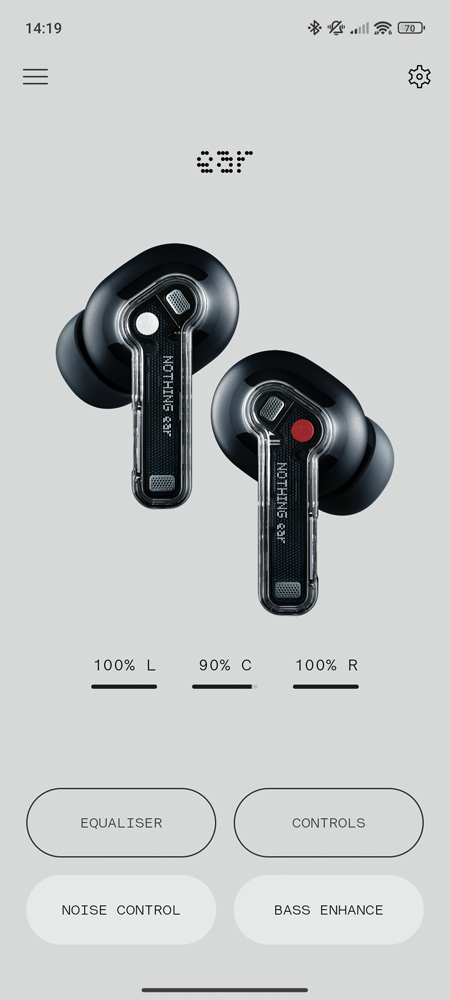
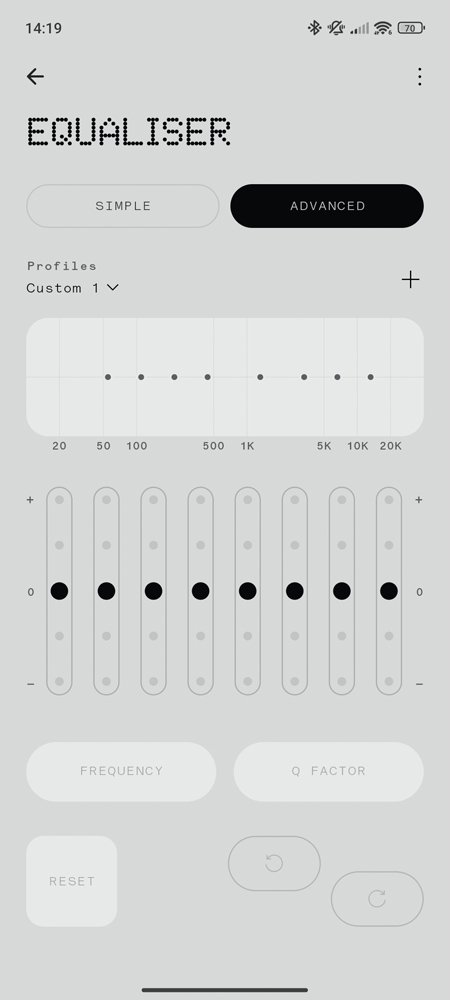
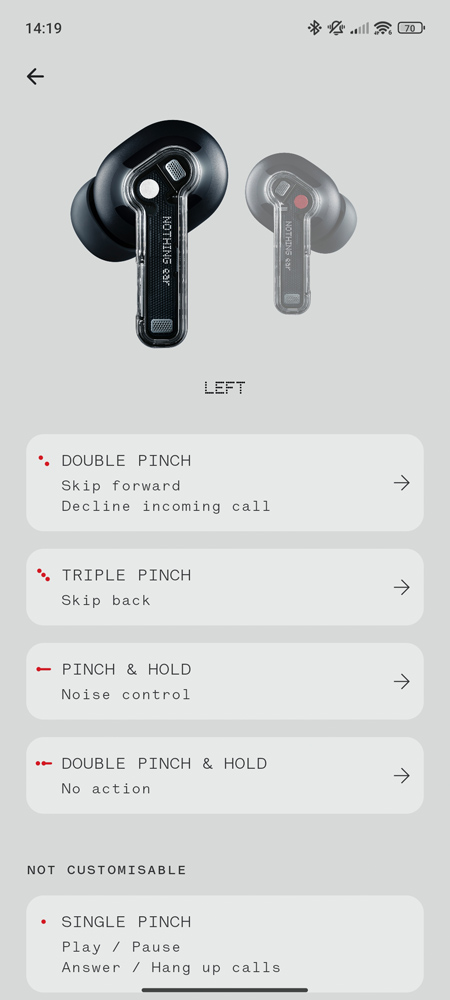
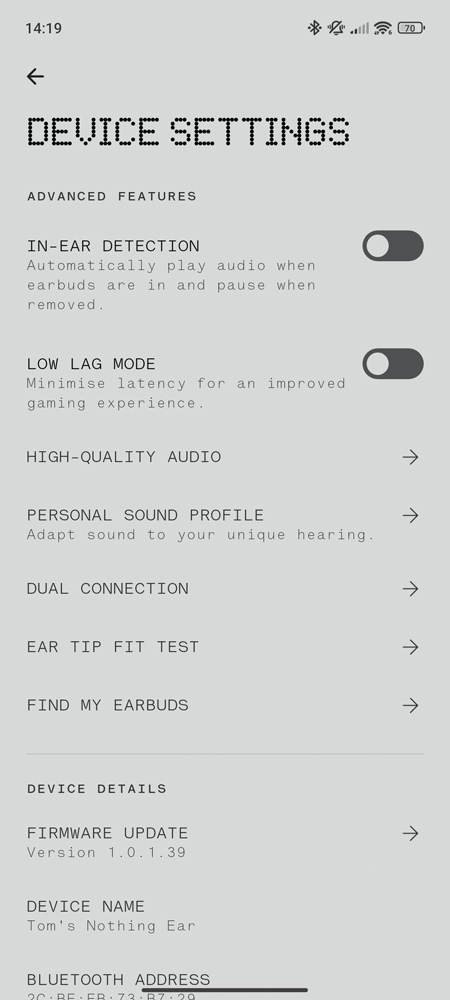
Nothing’s X companion app hasn’t been overhauled for these latest earphones, with most of the same settings and features I found previously with Ear 2. That includes fully customisable pinch controls, a choice of ANC modes, and battery life figures for the case and each bud right there on the homescreen.
Dual device connectivity, in-ear detection and the low latency mode are all hidden in the settings screen, along with firmware updates, higher quality Bluetooth codecs, and an ear tip fit test that’s handy for making sure you’re using the correct tip size. Find my Earbuds can also play a tone through each bud should you misplace them.
A hearing test personalises the audio based on which sound frequencies you’re able to hear. I found it made a minor difference, but if you’re harder of hearing it could prove more useful. It’s the customisable EQ that can make bigger differences: the simple mode returns, with sliders for bass, mid and treble, but an advanced mode offers up an eight-band equaliser (with tweakable Q factor, an audiophile-friendly extra step I can’t remember seeing in any sub-£150 earphones before Nothing added it to Ear 2 last year). You can create multiple profiles with drastically different audio signatures, and import ones created by others using QR codes.
It does feel a little artificial limiting this customisation to the Ear, though, while the cheaper Ear (a) has to make do with the basic sliders. Ear 2 users have had this customisation for almost a year now, too.
Sound quality and noise cancelling: all gain, no pain
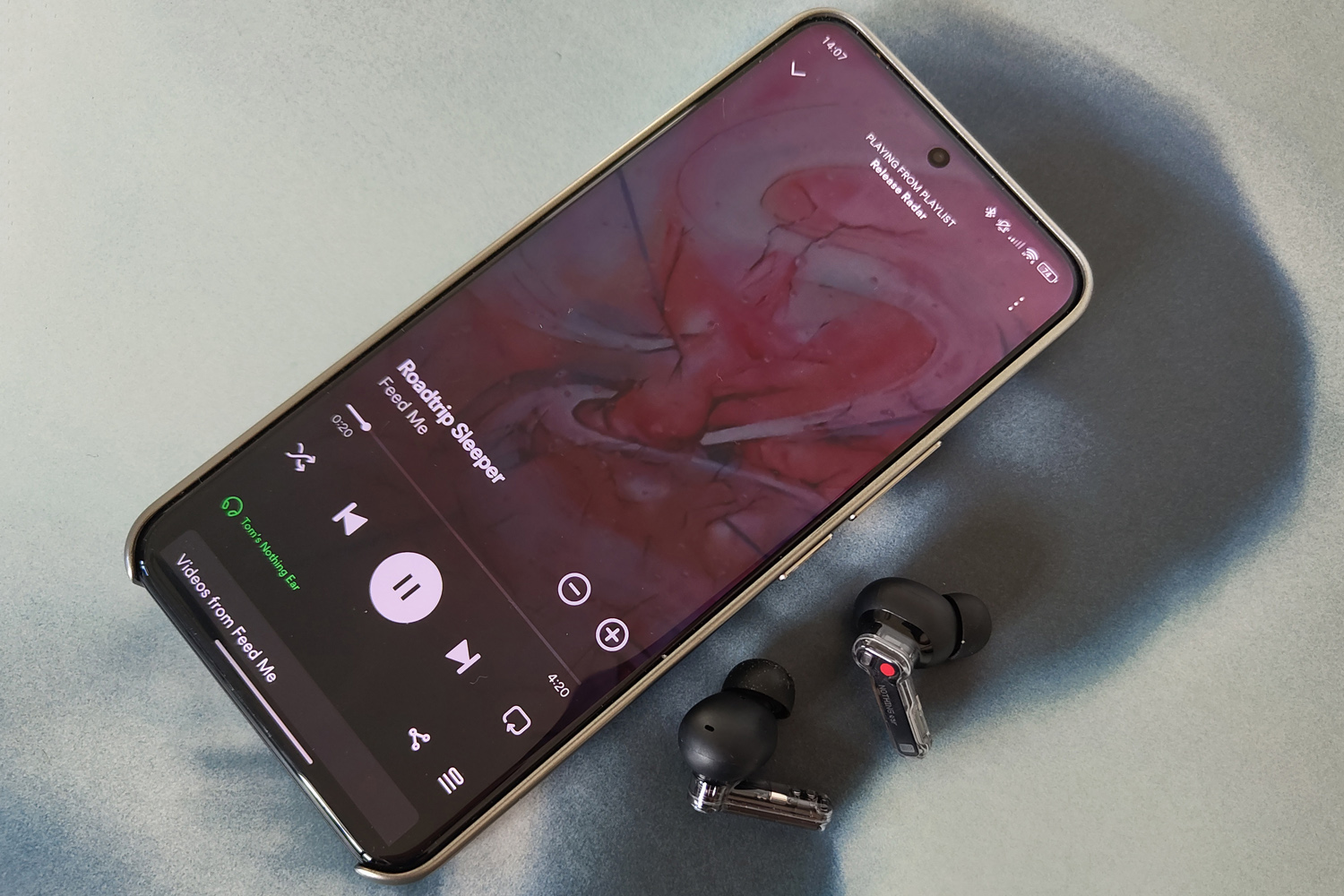
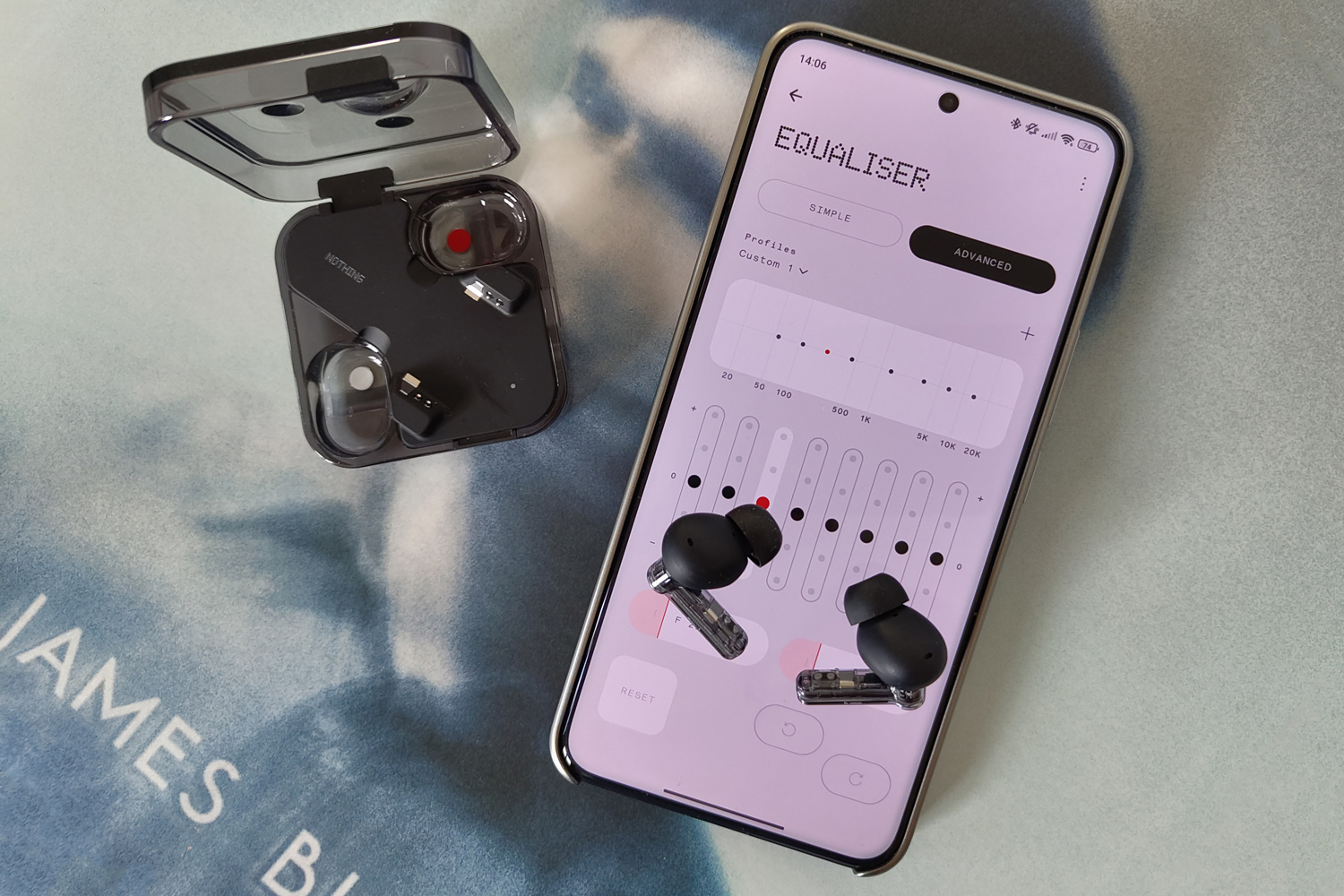
If Ear 2 “sound good… for the money”, Ear simply sounds good full stop. Nothing has upgraded to a new 11mm dynamic driver that uses a ceramic diaphragm, which allows for crisper highs than before, and added extra vents that let more air through the driver and help lower distortion across the board.
Tuning is still energetic and engaging, but with plenty of nuance too. The guitar on Freddie King’s Going Down had the sort of clarity you don’t often hear without spending a lot more, and the vocal performance is really allowed to shine through. It avoids harsher high frequencies well, even on tracks that aren’t especially well mastered.
Bass is also more controlled out of the box than Ear 2. That’s partly down to the new Bass Enhance mode, which is enabled by default and adds a little extra low-end oomph for those that want it – without straying into boomy territory. Personally I was happy to disable it, as bass presence was just fine without the extra processing. The bassline on Sigma’s Adrenalin Rush had real impact, without interrupting the vocals or other instruments.
With EQ set to Balanced, these earphones get impressively loud, to the point I wouldn’t listen above the 70% mark through my smartphone. Switching to the Advanced EQ also dials back the volume a fair bit, giving lots of room for pushing individual frequencies. Even after tweaking these earphones aren’t going to best rivals that cost twice the price on clarity or precision, but the difference is a lot less than you might expect.
Nothing reckons Ear’s updated active noise cancelling algorithms can strip out up to 45dB of background chatter now, up from 40dB on the previous-gen model. Noise levels are exponential, so that’s a significant improvement on paper. In practice, I was impressed with its ability to silence my commuter train journey, with the adaptive setting dialling up quickly in reaction to sudden loud noises, and pulling back during quieter moments. I also noticed an improvement over Ear 2 while walking through a busy city centre.
Sony WF-1000XM5 and Bose QuietComfort Ultra Earbud owners aren’t going to be jealous, as wind noise isn’t cut out to nearly the same extent, but you’re getting very capable ANC for your cash here.
Nothing Ear verdict
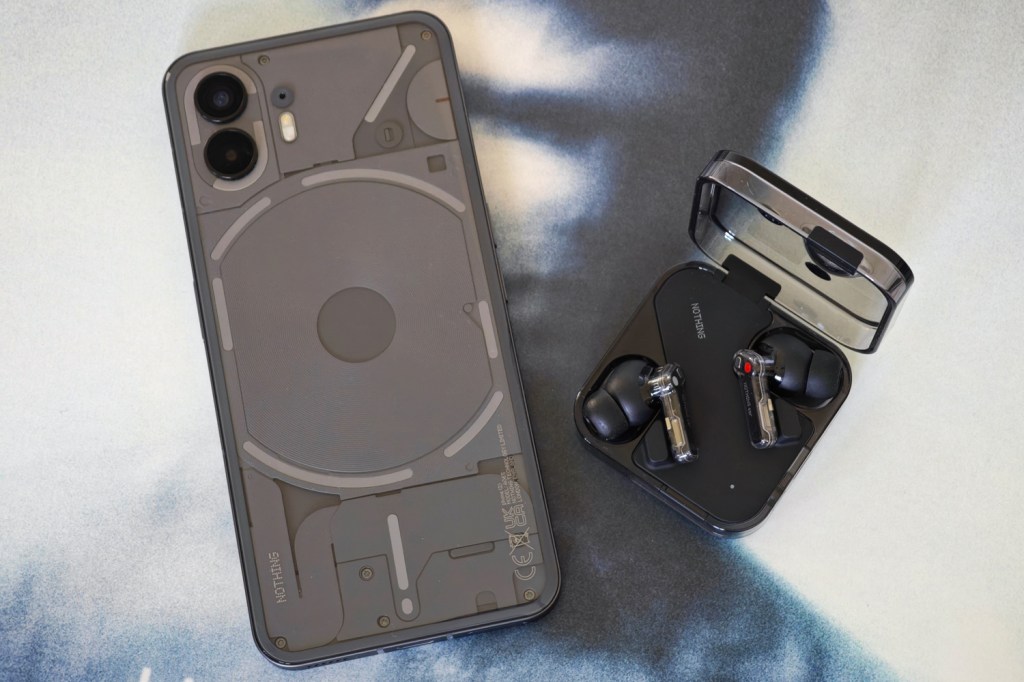
With only half as much development time between generations as its predecessor got, I don’t think the Nothing Ear is as significant a leap forward as Ear 2 was. But the improvements are plain to see. Noise cancellation is effective in louder environments than before, if only slightly, and the new driver delivers punchy sounding audio for the price. Most importantly, battery life is far more competitive with rivals now.
If you’re an Ear 2 owner that regularly runs out of juice during long listening sessions, that might be enough to convince to you upgrade. Anyone preferring buds to stems will probably still head towards the Sony WF-C700N or Samsung Galaxy Buds FE, but neither have the see-through panache of these earphones.
That just leaves Ear (a) as the elephant in the room. If you’re happy with Nothing’s out-the-box tuning and don’t need niceties like wireless charging, it’s a very tempting alternative that’ll leave a bit more cash in your wallet.
Stuff Says…
As distinctive as ever, but now with ANC upgrades and EQ improvements. A modest yet welcome update on what were already capable and keenly priced wireless earbuds.
Pros
Noise cancelling takes a small step up
Battery boost much appreciated
Enjoyable tuning with plenty of personalisation via app
Cons
Not the biggest upgrade from the outgoing pair
Cheaper Ear (a) not far behind on any front
Nothing Ear technical specifications
| Drivers | 11mm dynamic |
| ANC | Yes |
| Bluetooth version | Bluetooth 5.3 |
| Codecs supported | SBC, AAC, LDAC, LHDC |
| Durability | IP54 (buds) IP55 (case) |
| Battery life | 5.2hrs/8hrs (buds, ANC on/off) 24hrs/40.5hrs (buds and case, ANC on/off) |
| Dimensions | 29x22x24mm, 4.62g (buds, each) 56x56x22mm, 51.9g (case) |


